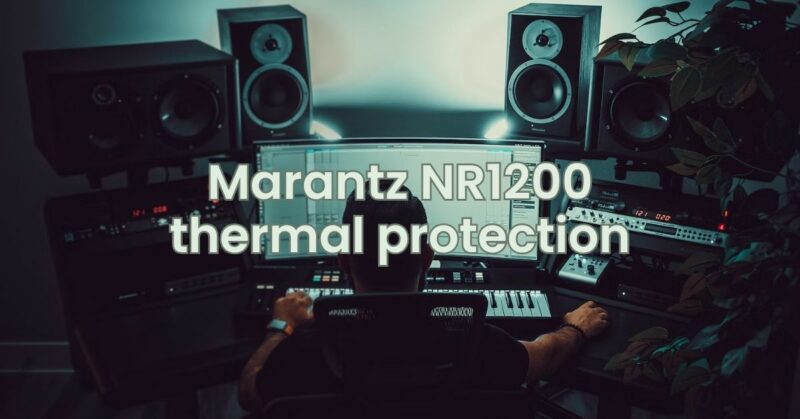The Marantz NR1200 is a highly regarded stereo receiver known for its exceptional audio performance and versatility. Like any electronic device, the NR1200 generates heat during operation, especially when driving speakers at higher power levels. To ensure the receiver’s reliability and longevity, Marantz has incorporated thermal protection mechanisms to safeguard against overheating. In this article, we’ll delve into Marantz NR1200’s thermal protection, how it works, and essential tips to manage heat dissipation effectively.
Understanding Thermal Protection:
Thermal protection is a safety feature designed to prevent electronic components from being damaged due to excessive heat. When the internal temperature of the NR1200 rises beyond safe operating limits, the thermal protection circuitry activates to safeguard the receiver. This mechanism is crucial in maintaining the receiver’s performance and protecting it from potential damage caused by overheating.
Causes of Overheating:
Several factors can contribute to the NR1200’s overheating:
- Poor Ventilation: Inadequate airflow around the receiver can hinder the dissipation of heat, leading to increased internal temperatures.
- High Power Usage: Operating the NR1200 at high volume levels for extended periods may cause the internal components to generate more heat than usual.
- Placement: Improper placement of the receiver in a confined space or within a cabinet with limited ventilation can impede heat dissipation.
Managing Heat Dissipation:
To optimize heat dissipation and prevent thermal protection activation, consider the following tips:
- Ventilation and Placement: Place the NR1200 in a well-ventilated area, away from obstructions and other heat-generating devices. Ensure that there is sufficient space around the receiver for adequate airflow.
- Speaker Impedance: Using speakers with an impedance lower than the receiver’s recommended range may cause it to work harder, generating more heat. Ensure your speakers’ impedance is within the recommended range.
- Volume Levels: While the NR1200 is capable of delivering robust sound, avoid operating it at maximum volume for prolonged periods, as this can increase heat buildup.
- Ambient Temperature: The ambient temperature of the room can affect the receiver’s internal temperature. Avoid using the NR1200 in extremely hot environments.
- Cleanliness: Regularly clean the vents and grilles of the NR1200 to prevent dust buildup, which can impede airflow and hinder heat dissipation.
- Use of External Cooling: In extreme situations, you may consider using external cooling solutions like fans or cooling pads to help dissipate heat effectively.
Thermal Protection Activation:
If the NR1200’s thermal protection is triggered due to overheating, the receiver may automatically shut down or reduce its output power to protect its internal components. In such cases, allow the receiver to cool down before using it again. Check for any obstructions that may be blocking the vents or contributing to the overheating issue.
Conclusion:
Marantz NR1200’s thermal protection is a vital feature that safeguards the receiver from potential damage caused by overheating. By understanding the factors that can lead to heat buildup and implementing proper heat dissipation management, users can ensure the receiver’s reliable performance and longevity. Adhering to the recommended guidelines and maintaining a well-ventilated setup will not only optimize the NR1200’s audio performance but also protect it from adverse effects related to excessive heat. Remember, efficient heat management is key to enjoying your Marantz NR1200 to its fullest potential and preserving its pristine audio quality for years to come.


